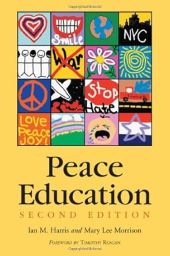Synopsis
The world has changed dramatically since the 1988 first edition of this work. The very notion of what is meant by peace, at least domestically, has been profoundly affected by the events of September 11, 2001.
New to this edition are additional discussions of the contributions of feminist theorists to the understanding of peacemaking, the role of the family, and the creation of visions and hope for the future. The volume begins with a discussion of the concepts of peace and peace education. It then considers religious and historical concepts of war, peace and peace education, describes how peace education can move people to work for social change and look for alternatives to violence, and discusses ways to begin implementing peace education in schools, churches and other community settings such as youth groups. It goes on to address sensitive issues in peace education, key concepts and topics, important biological and cultural factors, and barriers facing those who teach peace. It provides the “how” of peace education by examining optimal pedagogy and practices.






